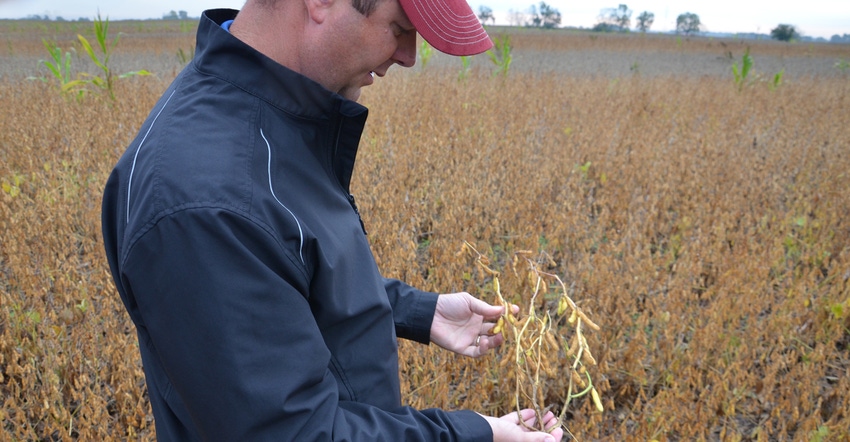August 13, 2018

I’ve learned a lot from corn yield maps but not so much from soybean yield maps in the past. What things should I be able to learn from soybean yield maps?
The Indiana certified crop adviser panel answering this question includes Betsy Bower, agronomist, Ceres Solutions Cooperative, Lafayette; Steve Gauck, sales agronomist, Beck’s, Greensburg; and Dan Ritter, agronomist, Dairyland Seed, Wabash.
Bower: Soybean yield maps should allow you to see low- and high-yield areas and varying grain moisture levels just like corn yield maps. There are times that low-yield areas will be unexplainable and you’ll need to do some investigating in the field. In the low-yield areas, some things you can test for include soil fertility and soybean cyst nematode pressure.
Adding yield analysis of your soybeans can allow you to have more of a full picture of yield in each of your fields, not just corn yield. It can provide information to start learning more about improving soybean yields. Soybeans can at times be easier to try some new stuff on and learn new things to optimize yield. This year most of our new trial products and practices are in soybeans vs. corn.
Gauck: You should be able to learn just as much from soybean yield maps as from corn yield maps. Soybeans can be more sensitive than corn in soil fertility and in poor drainage areas, but they also compensate well for trouble spots. Look for areas that you know had poor stands and check yields. Should you be modifying populations?
Look at the best areas of the fields. Are you fertilizing for high enough yields in soybeans based on crop removal by soybeans and not just by corn?
I like to compare corn and soybean yield maps to see if the low-yield areas are the same in both crops. This will help you target soil fertility, tile needs, seeding rates and herbicide programs for each crop. Use the yield maps to look at test strips and compare programs you’re trying on a pilot basis.
Ritter: Theoretically, you should be able to gain similar information from soybean yield maps as you do from corn yield maps. That said, we do know soybeans tend to be more resilient to stress, so changes in the field may not be as evident.
The other point to remember is simply that a 1-bushel-per-acre difference in soybean yield maps can be as important as a 3- to 5-bushel-per-acre difference in corn yield. So what may seem to be an insignificant yield difference in soybeans could be more meaningful than you first think. (This may be a reason to set yield range scales when combining soybeans so that smaller yield differences than you would see with corn will stand out when you look at a map of the field.)
The other question would be whether you’re evaluating similar parameters in the two crops. For example, are you changing seeding rates on soybeans like you may be with corn to learn the optimum seeding rate for your soybean crop? It seems as if we do more on-farm testing with corn than with soybeans.
You May Also Like




